Background:
This post discusses flow test results using a Racingline R600 intake.
Recently some flow tests have been conducted using a “full” 3″ elbow. This part, shown in red below, is different from a 3″ inlet elbow in that it maintains its 3″ diameter to the turbocharger.
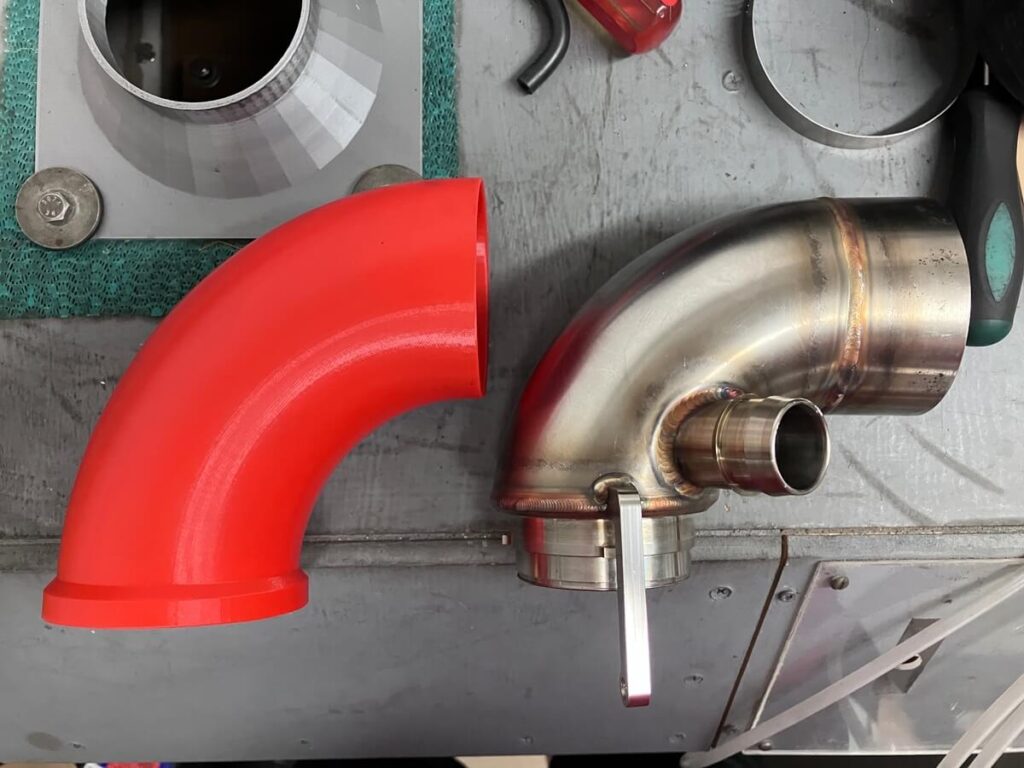
The part was added to the configurations I tested with to provide a better comparison of “intake” airflow by reducing the contribution of the inlet elbow to the overall intake airflow rate.
Since the three-inch elbow has an outlet of 76 mm, compared to a hybrid turbo of ~56 mm, this elbow does not limit airflow as much as the hybrid and stock elbows.
The goal of this latest test is to see how the Racingline R600 intake compares with the Blaze ATOM when the contribution from the inlet elbow is minimized.
Previously the Blaze ATOM Race intake was flow tested when connected directly to the flow bench using the Blaze inlet hose.
According to representatives of Equilibrium Tuning, the Racingline R600 flows less than the Blaze ATOM Race.

This finding is supposedly “observed in data logs“, although no data logs were provided.
Test Process:
For this test, the Racingline R600 is being paired with an MST inlet hose for connection with the 3″ inlet elbow. The Racingline brand inlet hose is not being used since it is made to fit the stock inlet elbow, which is 2.75″ at the inlet.
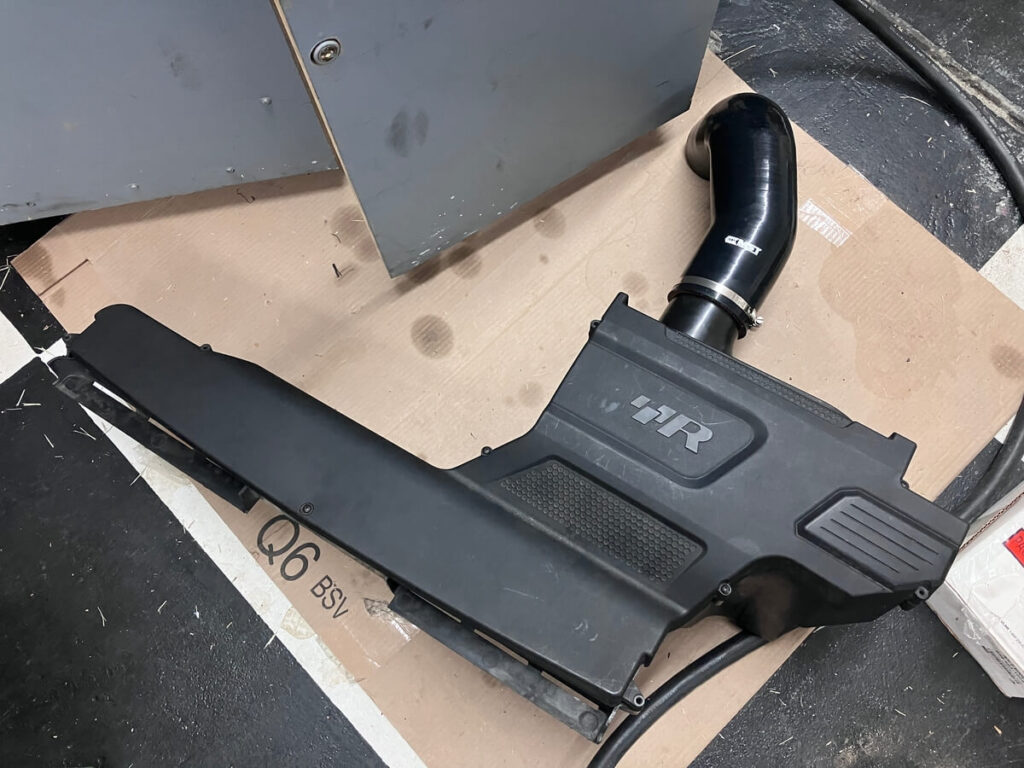
The intake is assembled and attached to the MST inlet pipe and 3″ elbow. The entire system is attached to the flow bench using a 3″ adapter.
The test is performed at a test pressure of 13″ of H2O.
Test Results:
The Racingline R600 flows 454 CFM @ 13″ of H2O.
This result is shown on the chart with other intakes that have been tested using the 3″ turbo inlet.
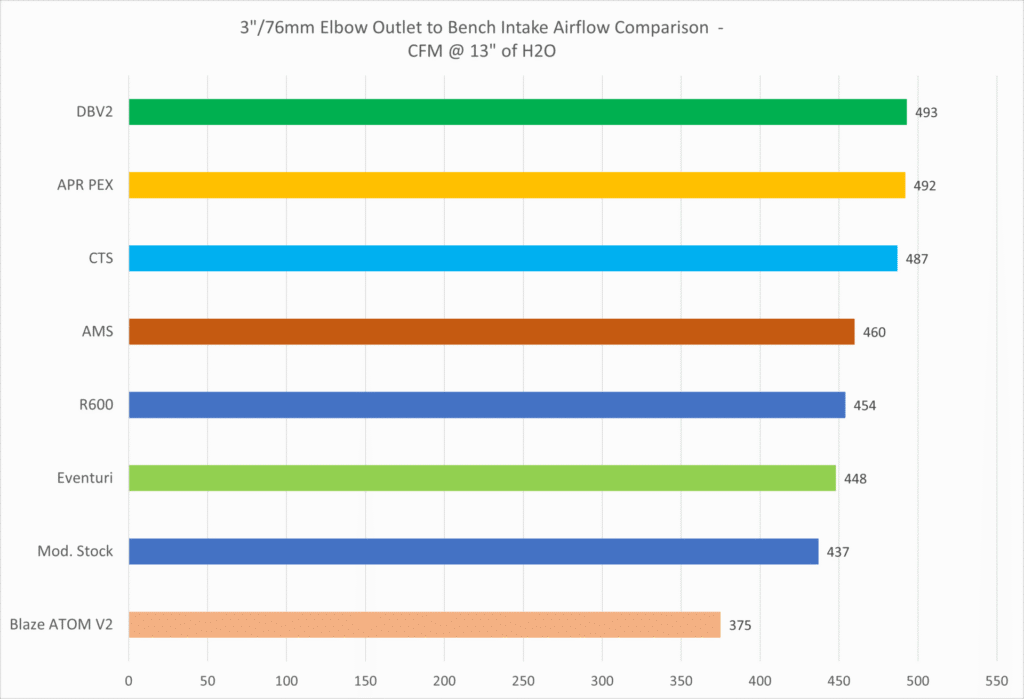
Compared to the Blaze ATOM Race the R600 flows ~21% more when using the 3″ elbow.
A trend is starting to form with the data, with open intakes flowing the most, and the AMS, R600, and Eventuri intakes flowing similarly, but less than the open intakes.
This finding prompted me to run a variation of the test with the top lid removed from the R600 intake.
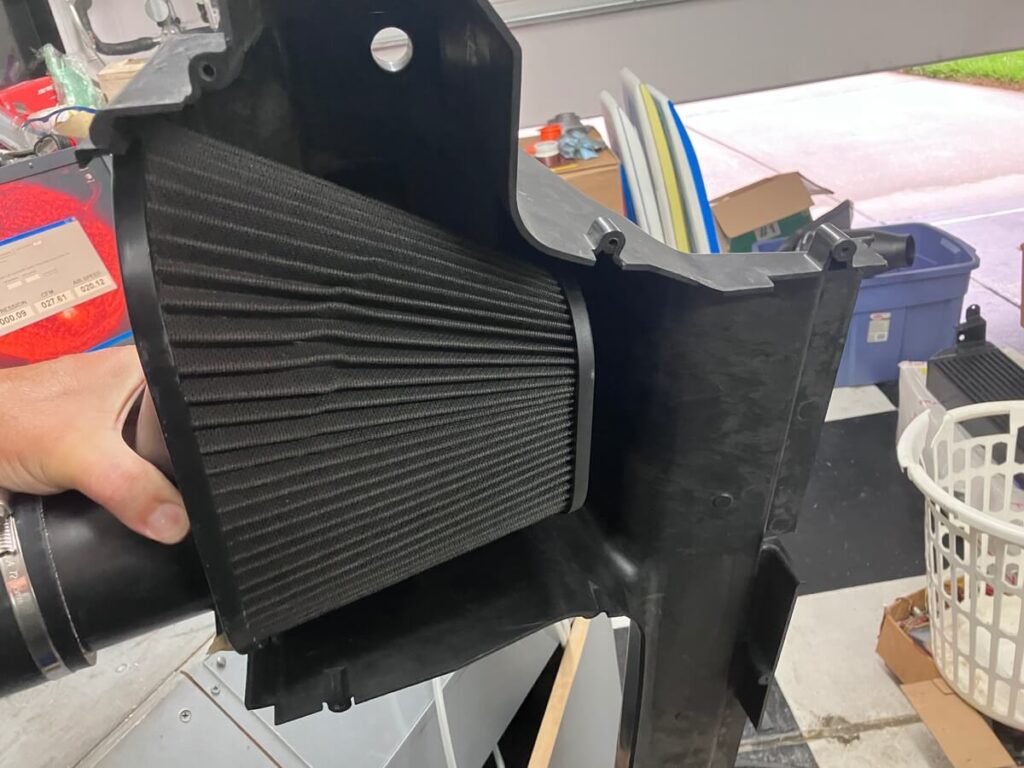
With the top open the R600 flows 504 CFM @ 13″ of H2O.
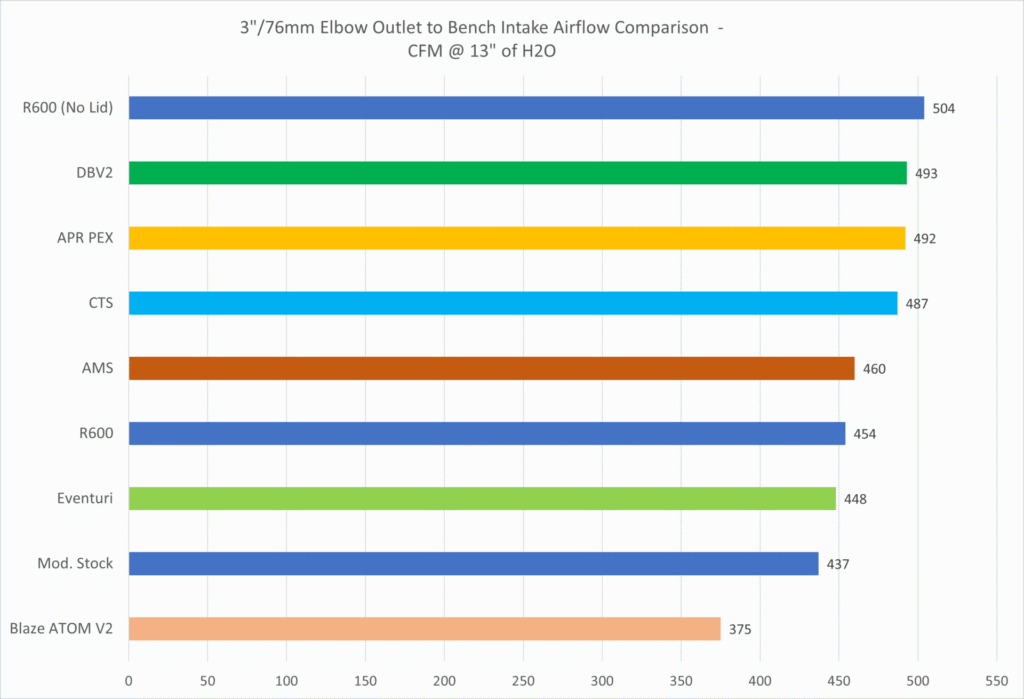
This result was the highest flow rate of the commercial intakes that have been tested.
Another open intake that has been tested is the prototype I’ve been working on.
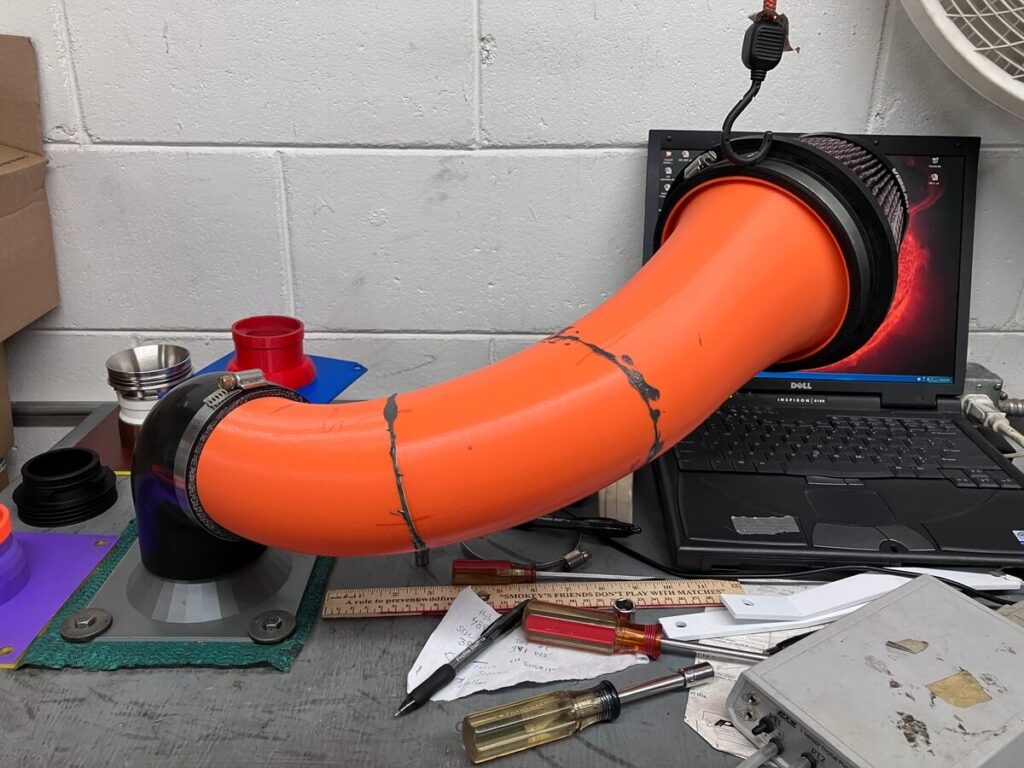
The results of this intake test confirm the trend of open intakes performing better than closed intakes at very high flow rates.

This result led to another test variation.
Seeing if simulating the engine hood being closed with the Blaze ATOM intake would make a difference since previously the intake had been tested without any covering over the top portion of the Blaze air duct.
A piece of cardboard served to simulate the engine hood being closed.
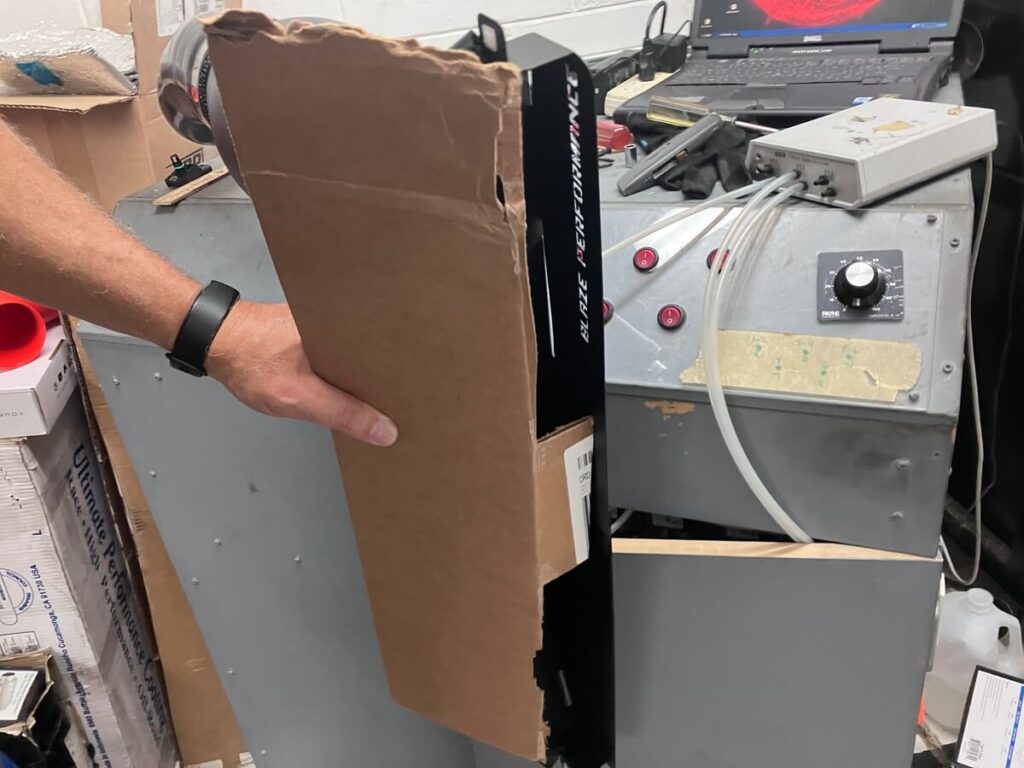
With the cardboard in place, the Blaze ATOM flows 374 CFM @ 13″ of H2O. This is the same flow rate as with the cardboard removed.
The absence of a difference is likely on account of the flow rate through the Blaze being relatively low, and thus the openings at the front are sufficient size to allow airflow into the intake without adversely affecting the airflow rate.
Conclusions:
The Racingline R600 intake was flow tested when attached to the flow bench using a 3″ turbo inlet elbow. The flow rate was measured to be 454 CFM @ 13″ of H2O, comparable with other closed aftermarket intakes.
Removing the top lid of the R600 produced an increase in the airflow to 504 CFM @ 13″ of H2O. This is the highest flow rate measured out of 6 commercial intakes that have been tested with the 3″ adapter.
A Blaze ATOM Race intake was flow tested while simulating a closed hood and found to not affect the airflow through the intake.
Claims made by a representative of Equilibrium Tuning, that the Blaze ATOM Race outperforms the Racingline R600, are not supported by these results.
Due to EQT not disclosing key information about the product comparisons they cite, one can only speculate about the contributing factors. In all likelihood, the comparison referenced by EQT consisted of the R600 intake using a stock-size inlet elbow, which would have drastically reduced the airflow through the intake system.
